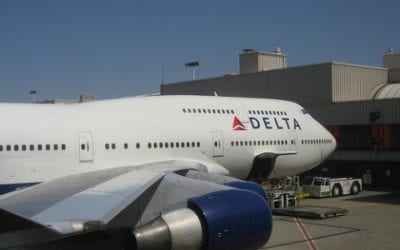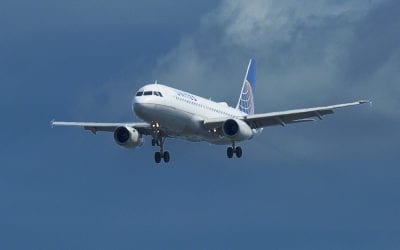Punxsutawney Phil had it right this year. His prediction on Groundhogs Day of six more weeks of winter, seems to have been prescient. Heck, I’m sitting in the midst of 20+ inches of snow in Springfield, Va., outside of Washington DC. The airlines were paying attention to Punxsutawney Phil this year like never before and already making plans to cancel flights in case of storms.
Once upon a time, the standard operating procedure for airlines was to hope for the best when they heard that a storm was coming. They, justifiably fretted about making a mistake and canceling flights for nothing more than a dusting when meteorologists may have predicted feet of snow or widespread ice. Alternatively, they worried about canceling flights for a simple rainstorm instead of the predicted hurricane.
The results of these decisions (and, honestly, the limitations of technology, but more on that later) were that airports would find themselves filled with distressed passengers. Some airports would deploy cots and blankets that were stored for just such emergencies when nature struck.
Airlines, attempting to do what they thought passengers wanted, loaded planes and lined them up on the runway in the hopes that they could take off during a possible break in the weather. In the meantime, other planes were circling above the airport awaiting permission to land. And then when they landed, often these incoming passengers found no open gates to deplane, meaning more delays and frustrations.
All of these efforts to move passengers from Point A to Point B resulted in the airlines being eviscerated by passenger rights zealots when tarmac delays mounted into the hours.
From the airlines’ point of view, they were facing a situation of, “Damned if you do and damned if you don’t.” Or, perhaps they were learning that, “No good deed goes unpunished.”
This most recent series of storms that barreled through the mid-Atlantic and mid-West with more on their way, as I tap this in to the computer, has provided an extensive test of the airlines’ new matrix for dealing with weather delays and possible cancellations.
The airlines are actually proactively canceling flights, sometimes days before departure. One would think that these cancellations would be met by the public with a large degree of irritation. But, that’s not the case.
The flying public are fairly savvy and resourceful. They know that Acts of God like snowstorms and hurricanes can close airports and result in canceled flights. The flying public for years has been understanding, however, the airlines seemed to think that passengers would prefer to take a chance on whether or not their flight could get off the ground rather than reschedule. So, in the passengers’ interest, airlines dutifully did their best to fly no matter what the weather.
Not any more. More cancellations are coming sooner than ever when airlines are faced with weather events.
The airlines have learned that passengers are happier when they have time to plan for changes rather than being faced with long waits at airports and on tarmacs. The airlines also realize that they can save a 747-load of money by making decisions earlier and setting up equipment and crews for quicker and better use after the storm passes.
Some say that Delta’s experience a decade when executives made the decision to cancel hundreds of flights in the face of a predicted ice storm in Atlanta was the “ah-hah!” moment for the industry. Ironically, the storm never materialized because temperatures stayed above freezing.
The executives reportedly thought they might be fired for making the wrong decision that canceled so many flights. Surprisingly, the response from passengers was understanding and many of them made alternative plans. Passengers were pleased to have been kept out of the rigors of poor-weather travel and they appreciated the time they were given to make alternative plans.
It was a revelation!
Passengers like knowing what is happening, even if they don’t like it. Passengers hate uncertainty, waiting, feeling like they are totally out of control and feeling that they are being misled and misinformed.
But it took time for technology to catch up with this newly developing passenger/airline paradigm. Only in the last couple of years have the airlines had the ability to contact all their passengers and offer them alternative arrangements. Communicating with all passengers and rebooking them in case of massive cancellations, until recently, has been physically and technically impossible.
The truth be told, technology has had a lot to do with the new ways that airlines can handle weather delays. Automatic telephone software, the ubiquity of cell phones, text messaging and automatic rescheduling software have changed the cancellation world for both passengers and the airlines.
Airlines, with automatic dialing software, can now almost immediately notify passengers via cell phones of changes in schedules and cancellations. In the old days, before such software and the widespread use of cell phones, getting the word out would have been physically impossible.
Plus, new rescheduling software and automatic notification systems allow the airlines to let passengers know what’s happening with their scheduled journey with plenty of time for them to make alternative arrangements or change the computer-generated rescheduling. Most passengers, in fact, don’t make changes.
It’s a new world. The airline executive mindset and the technical ability to communicate with passengers and automatically rebook thousands of travelers within minutes has changed the world for both the airlines and for those of us faced with impending storms.
Before the February 5-6 storms that dumped upwards of 20 inches of snow on the DC-area airports, virtually every airline canceled the bulk of their flights in and out of the airport. Today as Baltimore’s BWI airport and the Philadelphia airport both face another foot or more, of snow, USAirways and Southwest are both canceling flights. Southwest has announced that no planes will remain overnight in Philadelphia.
This all makes perfect sense. Passengers know what is happening. Airlines can make plans for planes and crews plus, hundreds of thousands of dollars are saved. Newspapers don’t publish the disaster PR photos of hundreds of stranded passengers (well maybe a few from those who never seem to get the message) and airplanes stuck on the tarmac for hours.
Now that the airlines understand passenger like to be clearly informed and they have the technology to implement changes, weather delay disasters can be avoided.

Charlie Leocha is the President of Travelers United. He has been working in Washington, DC, for the past 14 years with Congress, the Department of Transportation, and industry stakeholders on travel issues. He was the first consumer representative to the Advisory Committee for Aviation Consumer Protections appointed by the Secretary of Transportation from 2012 through 2018.




